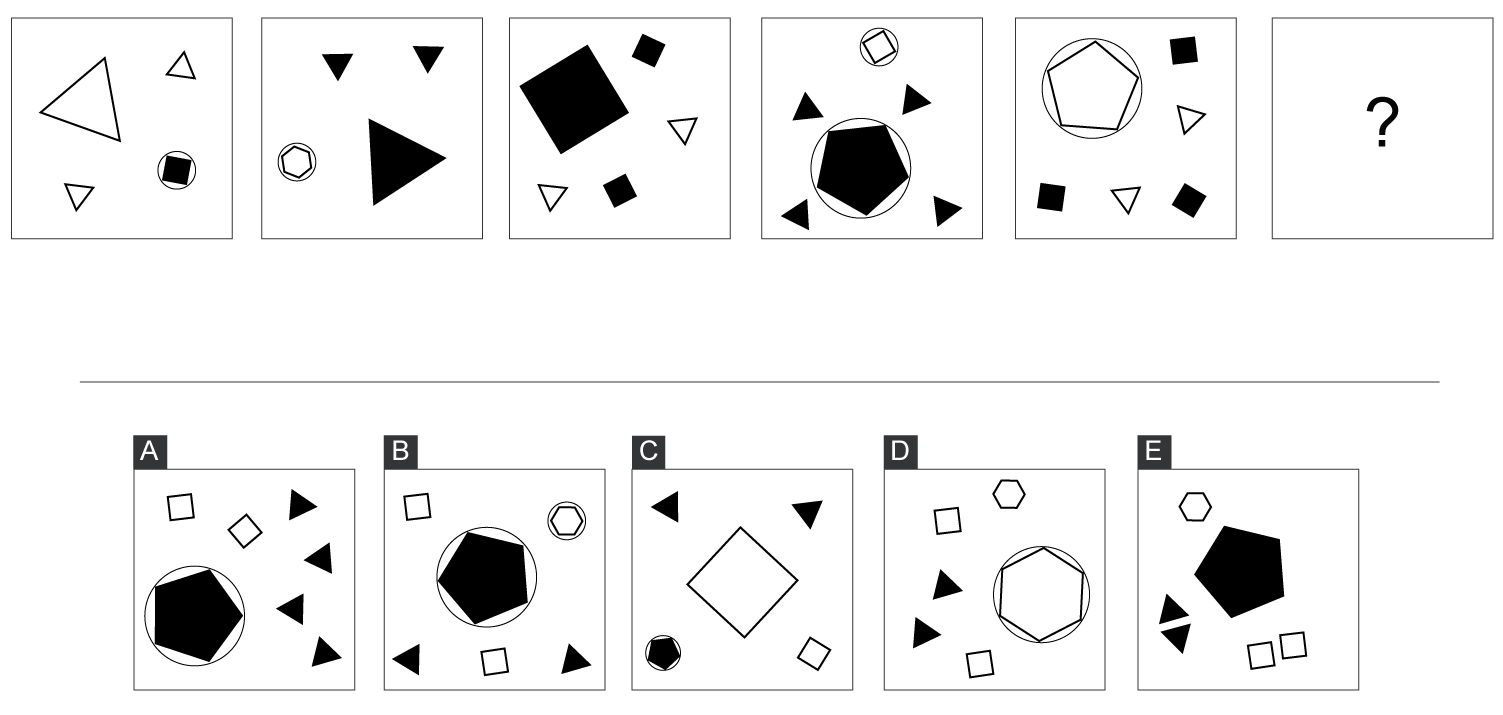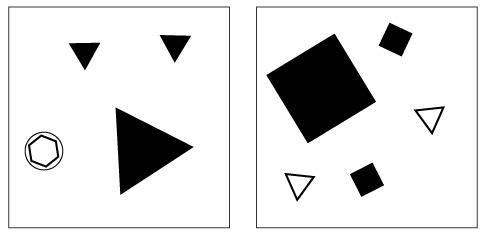
Recently we have been receiving many requests from EU Training’s users for some tips or methodology on how to approach the various test types, such as abstract, numerical or verbal reasoning. While the best way to learn about the methodology of succeeding at these tests is the live training webinars offered by EU Training, we decided to help the community by launching a new Tips & Tricks series on EU test methodology.
In the first part, we will look at a complex abstract reasoning test and see the three main stages involved in quickly finding the right answer.

Step 1: Inventory
Inventory may be a strange word to use in this context, but the most important first step when looking at an abstract reasoning question is not to start guessing but rather adopt a systematic approach. To do that, we must first analyse the test and see what kind of ’building blocks’ it has. In this particular example, the building blocks are:
- shapes with various numbers of sides (polygons)
- an occasional circle
- the color of the shapes also seems to be a defining feature
- the number of shapes in each figure also appears to be an important factor
The importance of the ’inventory’ is that it will make it easier for you to concentrate on the building blocks one by one and the relationships between them without missing anything, and this will be crucial in the next stage.
Step 2: Rule-Finding
In the next step, we need to think about what is happening to the building blocks. An abstract reasoning test may be based on several rues, so it is important to find the first one – this will put you on the path of figuring out the rest as well.

One of the first things that you might notice is the relationship between the number of small shapes and the number of sides the large shape has – this will be our first rule: the large shape has as many sides as the number of small shapes in the figure.
The next thing you may turn your attention to is the number of shapes moving from left to right in the series, but this doesn’t seem to follow any particular order. If, however, we count the total number of sides the small shapes have in each figure, a different picture emerges:
10 - 12 - 14 - 16 - 18 - ?
This will allow us to formulate our next rule:
The total number of sides the small shapes have increases by 2 from one figure to the next, starting from 10.
We now have only the black and white coloring and the role of the circle to investigate. One particular thing you will notice about the circle is that it is always around a specific shape – on further review, we will see that it is indeed around the shape which has only one instance in the figure. That is, if there is only one small triangle, it will be around that, if it has one hexagon, it will be around that, and so on.
The final rule has to do with the coloring, and since we now have all the other factos accounted for, it will be easier to realize that in odd-numbered figures (first, third, etc.), shapes with even numbers of sides are shaded while in even-numbered figures (second, fourth, etc.), shapes with odd numbers of sides are shaded.
Step 3: Elimination!
Now comes the fun part :) The aboverules we came up with can now be used to ’disqualify’ answer options as incorrect one by one, hopefully leaving us with only one option – the right answer!
Let’s see:
Rule #1: the large shape has as many sides as the number of small shapes in the figure.
This will disqualify A and D.
Rule #2: The total number of sides the small shapes have increases by 2 from one figure to the next, starting from 10.
This will disqualify C.
Rule #3: If there is a shape with only a single instance on the image, that shape is circled.
This finally disqualifies E too.
Notice an interesting thing here: we only looked at three rules and already managed to disqualify 4 out of 5 answer options! This, of course, will not always be the case, but it is worth checking and disqualifying the answer options after each rule – you may save valuable time at EPSO exams if it turns out that you don’t even need to find all the rules.
Interested in more EU Career Exam tips and methods for abstract reasoning, as well for numerical and verbal reasoning?
Perhaps having trouble with Accuracy, Organising & Prioritising or other Professional Skills tests?
Have a look at our FREE Beginner Guide and Pro Tips Webinars!